El esquí nórdico se trata de la libertad de movimiento. A diferencia del esquí alpino, tu talón no está bloqueado, permitiendo una zancada natural mientras deslizas sobre la nieve. Este estilo de esquí se remonta a miles de años en Escandinavia, donde evolucionó de una herramienta de supervivencia a un deporte de invierno. Hoy en día, está ganando popularidad en EE.UU. como un entrenamiento de cuerpo completo y bajo costo que no requiere montañas empinadas ni pases de elevador caros.
Puntos clave para saber:
- Técnicas: El esquí nórdico incluye la zancada diagonal clásica, el esquí de patinaje (similar al patinaje sobre hielo) y el turismo de montaña para la exploración fuera de pista.
- Equipo: Esquís ligeros, botas flexibles y bastones adaptados a tu altura son esenciales. El sistema de fijación asegura solo la punta, dejando el talón libre.
- Accesibilidad: Es económico y se puede practicar en senderos acondicionados, parques o incluso en tu patio trasero después de una nevada.
- Beneficios para la salud: Es un entrenamiento cardiovascular intenso que es popular entre corredores y ciclistas en invierno.
Para un toque moderno, productos como Snowfeet* NORDIC Cross-country Skate Skis simplifican la experiencia. Estos esquís compactos se ajustan a botas de invierno normales, no necesitan encerado y funcionan en terrenos variados, haciendo que el esquí nórdico sea aún más fácil de probar. Ya sea que busques un deslizamiento tranquilo o un entrenamiento que queme músculos, el esquí nórdico ofrece algo para todos.
Cuatro técnicas básicas clásicas explicadas
Principales técnicas y estilos del esquí nórdico
El esquí nórdico ofrece una variedad de técnicas diseñadas para ayudar a los esquiadores a rendir al máximo en diferentes condiciones de nieve y terrenos. Cada estilo tiene su propio encanto y se adapta a distintos niveles de condición física y preferencias.
Técnica clásica
La técnica clásica es la base del esquí nórdico y se siente un poco como caminar con bastones. Usa un paso diagonal: cuando una pierna avanza, el brazo y bastón opuestos te impulsan hacia adelante. Este movimiento rítmico te permite deslizarte suavemente por pistas preparadas. Es perfecto tanto para senderos bien cuidados como para rutas más aventureras fuera de pista.
Técnica de patinaje
Si alguna vez has patinado sobre hielo, la técnica de patinaje te resultará familiar. Empujas en ángulo, formando una V con tus esquís: talones juntos, puntas hacia afuera. Este movimiento lateral te da velocidad y es ideal para senderos anchos y preparados donde hay mucho espacio para moverse.
Opciones de travesía nórdica y fuera de pista
El esquí nórdico de travesía lleva la aventura fuera de los caminos trillados. Es una mezcla de técnicas clásicas y de patinaje, que te ayudan a navegar por condiciones de nieve variadas y paisajes naturales. Ya sea que deslices por bosques tranquilos o enfrentes colinas onduladas, este estilo ofrece la oportunidad de explorar el lado más salvaje del invierno.
A continuación, profundicemos en el equipo que convierte estas técnicas en aventuras inolvidables de esquí nórdico.
Conceptos básicos del equipo de esquí nórdico
El equipo adecuado puede hacer que tu experiencia de esquí nórdico sea excelente o decepcionante. A diferencia del esquí alpino, donde el equipo está diseñado para velocidad y control en pendientes pronunciadas, el equipo nórdico se centra en diseño ligero, flexibilidad y eficiencia, perfecto para el movimiento impulsado por el cuerpo humano en terrenos variados.
Resumen del equipo básico
Comencemos con lo esencial. Los esquís nórdicos son más largos, estrechos y ligeros que sus primos alpinos, diseñados para deslizarse eficientemente en terrenos más planos. Esto los hace ideales para el movimiento suave y fluido por el que es conocido el esquí nórdico.
El sistema de fijación es lo que realmente distingue al esquí nórdico. A diferencia de las fijaciones alpinas que bloquean toda la bota para controlar el descenso, las fijaciones nórdicas solo aseguran la punta de la bota. Esto permite que el talón se levante libremente, creando ese movimiento natural de impulso y deslizamiento.
Las botas nórdicas siguen la misma filosofía de flexibilidad. Están diseñadas para permitir más movilidad en el tobillo comparado con la estructura rígida y dura de las botas alpinas. Al elegir botas, la comodidad es clave, pero no olvides verificar la compatibilidad con tus fijaciones. En EE. UU., los dos sistemas de fijación más comunes son NNN (New Nordic Norm) y SNS (Salomon Nordic System).
Ahora, hablemos de los bastones. La longitud de tus bastones depende de tu estilo de esquí. Para el esquí clásico, deben llegar a tu axila o un poco más arriba. Para el esquí de patinaje, elige bastones más largos que lleguen a tu barbilla o nariz. A diferencia de los bastones alpinos, los bastones nórdicos se usan para propulsión y estabilidad, por lo que suelen ser más largos para ayudarte a navegar terrenos variados.
Aquí hay otra gran diferencia: los esquís nórdicos tradicionales para pista generalmente no tienen cantos metálicos completos como los esquís alpinos. Sin embargo, si te aventuras en terreno fuera de pista, algunos esquís nórdicos vienen con cantos metálicos para ayudarte a girar más fácilmente en nieve profunda.
Por supuesto, tu equipo no está completo sin la ropa adecuada y el equipo de seguridad.
Ropa y equipo de seguridad
El esquí nórdico es un entrenamiento, así que el layering es tu mejor aliado para los inviernos en EE. UU. Comienza con una capa base que aleje el sudor de tu piel, añade capas aislantes para el calor y termina con una capa exterior cortaviento e impermeable. Así, puedes ajustar tus capas mientras te calientas en las subidas o te refrescas en los descensos.
Una regla de oro: olvida el algodón. El algodón retiene la humedad y puede dejarte helado cuando se moja. En su lugar, opta por telas sintéticas o lana merino, que mantienen el calor incluso cuando están húmedas.
No olvides los pequeños pero importantes accesorios. Las gafas o lentes de sol protegen tus ojos del viento y el deslumbramiento, mientras que un gorro cálido, guantes aislantes y calcetines térmicos mantienen el frío a raya. En días soleados, el reflejo de la nieve puede amplificar los rayos UV, por lo que estos extras son cruciales.
Para aventuras más largas, lleva algunos extras: calentadores de manos, un pasamontañas, protector solar (sí, incluso en invierno) y una mochila ligera para agua y snacks. El esquí nórdico es una actividad de alta energía, y mantenerse hidratado es tan importante en el frío como en el calor.
Este equipo no es solo funcional, está diseñado para trabajar con los movimientos de tu cuerpo, mejorando la libertad y eficiencia que hacen que el esquí nórdico sea tan especial. Es un deporte accesible, que ofrece un entrenamiento increíble y te permite conectar con la naturaleza de una manera que se siente sin esfuerzo pero gratificante.
sbb-itb-17ade95
Snowfeet* Esquís de patinaje nórdico de fondo vs. esquís tradicionales y snowboards
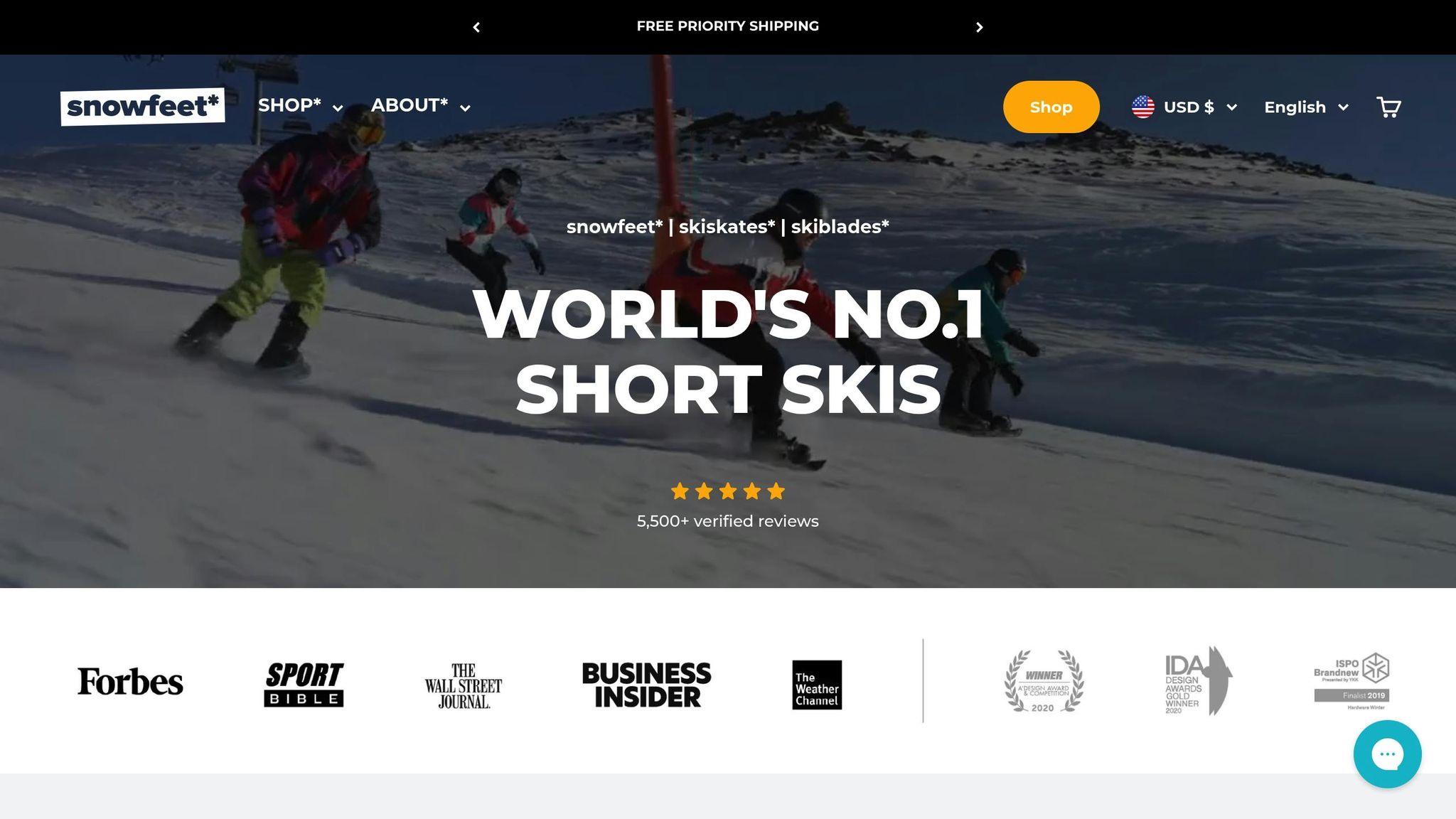
Snowfeet* NORDIC Cross-country Skate Skis están revolucionando el mundo de los deportes de invierno. Estos no son solo esquís, son una forma completamente nueva de entender el equipo invernal.
Zbynek y Michael, las mentes detrás de Snowfeet*, diseñaron estos esquís más cortos para ofrecer una alternativa fresca al equipo tradicional. Incluso imaginan que estos esquís causen sensación en los Juegos Olímpicos algún día.
Cómo se comparan los Snowfeet* con las opciones tradicionales
Aquí tienes una comparación rápida lado a lado de cómo los esquís Snowfeet* NORDIC se comparan con los esquís nórdicos convencionales y los snowboards.
| Característica | Snowfeet* NORDIC | Esquís nórdicos tradicionales | Snowboards tradicionales |
|---|---|---|---|
| Longitud | 35.4 pulgadas (90 cm) | 70–79 pulgadas (180–200 cm) | 59–67 pulgadas (150–170 cm) |
| Portabilidad | Cabe en una mochila | Necesita un portaequipajes o bolsa para esquís | Necesita un portaequipajes o bolsa |
| Compatibilidad de botas | Botas de invierno normales | Botas nórdicas especializadas ($150–$400) | Botas de snowboard ($200–$600) |
| Curva de aprendizaje | Minutos a horas | Semanas a meses | Días a semanas |
| Almacenamiento | Amigable con el armario | Necesita espacio en garaje o sótano | Necesita espacio en garaje o sótano |
| Versatilidad de terreno | Pendientes, senderos, patios traseros | Solo senderos preparados | Solo pendientes de montaña |
| Rango de precios | $250–$275 | $300–$800+ (más botas/fijaciones) | $400–$1,200+ (más botas/fijaciones) |
Con esquís nórdicos tradicionales que miden hasta 79 pulgadas, el diseño compacto de Snowfeet* es un claro ganador en conveniencia. Esta comparación muestra por qué Snowfeet* es una opción inteligente para quienes buscan simplificar su equipo y disfrutar de las pistas sin complicaciones.
Por qué Snowfeet* destaca
Portabilidad increíble. Mete Snowfeet* en una mochila normal, sin necesidad de portaequipajes o almacenamiento voluminoso. Perfecto para quienes viven en apartamentos o tienen autos pequeños.
No se requieren botas especiales. Olvídate de gastar cientos en calzado especializado. Solo ponte tus botas de invierno normales y estarás listo para salir.
Rápido de aprender. Las técnicas tradicionales de esquí nórdico pueden tardar semanas o meses en dominarse. Con Snowfeet*, la mayoría de las personas deslizan con confianza en solo una sesión, gracias al diseño intuitivo.
Mejor maniobrabilidad. Los esquís más cortos facilitan el equilibrio y el giro, lo cual es genial para principiantes. Pero no te preocupes: todavía hay mucha diversión para esquiadores experimentados.
Ve a cualquier lugar. Ya sea estaciones de esquí, senderos para caminatas o incluso tu propio jardín, Snowfeet* lo maneja todo. Los esquís nórdicos tradicionales se limitan a senderos preparados, y las tablas de snowboard son mejores para las pendientes de montaña, pero Snowfeet* te da más libertad.
Configuración asequible. Un kit completo de esquí nórdico puede costar entre $600 y $1,200 o más al incluir esquís, botas, fijaciones y bastones. Snowfeet* comienza en solo $250, lo que lo convierte en una opción económica.
¿La conclusión? Snowfeet* está cambiando las reglas del juego. Al combinar elementos del esquí y el snowboard mientras elimina los obstáculos habituales, están haciendo que los deportes de invierno sean más accesibles y divertidos. Mientras que el equipo tradicional se aferra a diseños antiguos con pequeños ajustes, Snowfeet* lidera la carga hacia una nueva era de aventuras invernales.
Cómo elegir equipo de esquí nórdico para las condiciones de EE. UU.
Elegir el equipo adecuado puede hacer o deshacer tus aventuras de invierno. Con la variedad de condiciones de nieve en Estados Unidos — desde los senderos helados de Vermont hasta el polvo esponjoso del backcountry en Colorado — tu equipo debe coincidir tanto con tus objetivos como con el terreno que explorarás. Aquí tienes lo que debes tener en cuenta al prepararte para el esquí nórdico en Estados Unidos.
Qué considerar
Piensa en cómo lo usarás. ¿Buscas vueltas para ponerte en forma en senderos preparados, salidas casuales con la familia o exploración en terreno virgen? Cada actividad tiene diferentes requisitos de equipo. Los esquís nórdicos tradicionales son ideales para senderos preparados, pero algo como Snowfeet* es más versátil, permitiéndote deslizarte por senderos de caminata, parques o incluso tu propio jardín. Además, muchas áreas de esquí cobran tarifas diarias por el acceso a los senderos, lo que puede sumar. Snowfeet* elimina ese costo al funcionar en cualquier superficie cubierta de nieve.
Las condiciones de la nieve varían mucho. En todo Estados Unidos, encontrarás desde nieve húmeda y pesada hasta polvo ligero y seco. Algunas áreas incluso atraviesan ciclos de congelación y deshielo, creando condiciones impredecibles. Los esquís tradicionales a menudo necesitan ajustes de encerado para manejar estos cambios, lo que puede ser un fastidio.
Las tarifas locales y el clima extremo también pueden complicar las cosas. El equipo tradicional tiene dificultades con las temperaturas fluctuantes, pero Snowfeet* está fabricado con materiales que resisten bien estas condiciones desafiantes.
La compatibilidad y el tamaño de las botas pueden ser complicados con los equipos tradicionales. Las botas de esquí nórdico suelen usar tallas europeas, por lo que convertirlas a tallas estadounidenses y encontrar el ajuste correcto puede significar varias visitas a la tienda. Snowfeet* evita este dolor de cabeza al funcionar con tus botas de invierno aisladas normales: simple y conveniente.
El almacenamiento y transporte también vale la pena considerarlos. Los esquís tradicionales pueden medir hasta 6 o 7 pies de largo, lo que los hace incómodos para guardar y transportar. Snowfeet*, por otro lado, es compacto y fácil de llevar.
Estos factores resaltan por qué Snowfeet* puede ser una mejor opción para muchos esquiadores que enfrentan las condiciones invernales de EE. UU.
Por qué Snowfeet* Funciona Mejor
Cuando observas los desafíos del esquí nórdico en EE. UU., Snowfeet* destaca como una opción práctica y versátil.
La adaptabilidad al clima es un gran plus. Los esquís tradicionales a menudo requieren encerado constante para rendir bien en temperaturas cambiantes. Snowfeet* elimina el encerado por completo, usando materiales modernos para ofrecer un rendimiento constante en la mayoría de las condiciones invernales.
La flexibilidad en diferentes terrenos es otra ventaja. Mientras que los esquís nórdicos tradicionales están diseñados principalmente para senderos preparados, Snowfeet* funciona casi en cualquier lugar: caminos preparados, senderos de caminata, campos de golf o incluso pendientes en el patio trasero. Esta versatilidad coincide con el espíritu aventurero de muchos esquiadores estadounidenses.
La facilidad de uso lo hace atractivo para familias y principiantes. Dominar técnicas de esquí nórdico como la zancada diagonal o el empuje con doble bastón puede tomar tiempo. Snowfeet* es mucho más intuitivo, así que puedes empezar a divertirte de inmediato.
La eficiencia de costos es difícil de ignorar. Un equipo tradicional completo —esquís, botas, fijaciones, bastones y tarifas de senderos— puede ser caro. Snowfeet* ofrece una opción más asequible para quienes desean disfrutar del invierno sin los altos costos y la complejidad.
Al final del día, tu elección depende de lo que busques. Si te apasiona la carrera nórdica tradicional y tienes fácil acceso a senderos preparados, el equipo convencional puede tener sentido. Pero para la mayoría de los estadounidenses que quieren una forma divertida, flexible y accesible de disfrutar el invierno, Snowfeet* ofrece una alternativa moderna y sin complicaciones.
Conclusión
El esquí nórdico es una forma fantástica de ejercitar todo el cuerpo, ya sea deslizándote por senderos preparados con la clásica zancada diagonal o aventurándote en nieve virgen en la montaña. Pero seamos sinceros: el equipo tradicional de esquí nórdico puede ser un problema. Entre el equipo especializado, los rituales de encerado y la necesidad de senderos mantenidos, no siempre es fácil para todos sumergirse en este deporte invernal.
Presentamos los Snowfeet* NORDIC Cross-country Skate Skis: una nueva visión del esquí nórdico. Estos esquís de 35 pulgadas ofrecen el mismo deslizamiento y beneficios cardiovasculares, pero con una fracción del lío. Olvídate de encerar y de equipos caros. Puedes atarlos a tus botas de invierno normales y recorrer cualquier lugar cubierto de nieve, ya sea un parque local, un sendero de caminata o incluso tu patio trasero.
Además, Snowfeet* facilita la recreación invernal para personas en todo EE. UU., sin importar el clima o el terreno. Su tamaño compacto significa que son fáciles de almacenar y transportar, y eliminan molestias comunes como los altos costos de equipo y las tarifas de senderos.
Para cualquiera en los EE. UU. que busque una forma simple y flexible de disfrutar el esquí de estilo nórdico, Snowfeet* ofrece una solución que combina los beneficios clásicos de fitness del deporte con la conveniencia moderna. Devuelve la alegría y la libertad del esquí nórdico sin las barreras habituales.
Ya sea que busques una actividad familiar divertida, un entrenamiento intenso o simplemente una nueva aventura invernal, Snowfeet* facilita abrazar la nieve a tu manera.
Preguntas frecuentes
¿Cómo se comparan los Snowfeet* NORDIC Cross-country Skate Skis con el equipo tradicional de esquí nórdico?
Los Snowfeet* NORDIC Cross-country Skate Skis son un cambio radical para los aventureros invernales. Con solo 90 cm de largo, son compactos, ligeros y se pueden sujetar a casi cualquier calzado de invierno. Esto los hace súper portátiles y perfectos para principiantes. En comparación, los esquís nórdicos tradicionales son mucho más largos, requieren botas especiales y pueden ser difíciles de manejar, especialmente si eres nuevo en el deporte.
Con Snowfeet*, tienes más control y manejo más sencillo, ya sea que estés recorriendo senderos nevados o disfrutando del paisaje invernal. Su tamaño pequeño y configuración simple los hacen una excelente opción para esquiadores recreativos que buscan un giro moderno y sin complicaciones al esquí de fondo.
¿Es más fácil para los principiantes aprender esquí nórdico o usar Snowfeet*?
Para quienes son nuevos en los deportes de nieve, Snowfeet* facilita el aprendizaje en comparación con el esquí nórdico tradicional. No necesitas dominar técnicas complicadas: solo comienza con un simple movimiento de caminar y te sentirás seguro en poco tiempo.
Estos mini esquís son ligeros, fáciles de transportar y súper fáciles de usar. Te permiten disfrutar de la nieve sin los desafíos habituales de aprender a esquiar. Si buscas una forma fresca y divertida de experimentar el invierno, Snowfeet* es una gran opción a considerar.
¿Cómo decido entre el esquí nórdico clásico y Snowfeet* para mis aventuras invernales?
Si buscas una forma divertida, fácil de aprender y súper portátil para disfrutar del invierno, Snowfeet* podría ser justo lo que necesitas. Su diseño pequeño y ligero significa que son muy fáciles de llevar, simples de usar y perfectos para evitar el volumen del equipo invernal tradicional. Además, son una opción más segura para salidas casuales, ayudando a reducir caídas y manteniendo todo sin complicaciones. Perfectos para viajes rápidos a la nieve o simplemente para divertirse sin estrés.
Ahora, si buscas una experiencia más intensa y de resistencia, el esquí nórdico tradicional podría ser tu opción. Se trata de habilidad técnica, control y rendimiento. Pero, seamos honestos, los esquís más grandes y la configuración más compleja pueden hacer que sean un poco molestos de transportar y menos ideales para salidas espontáneas. Para la mayoría, Snowfeet* encuentra el punto ideal entre conveniencia y facilidad, ofreciendo un giro fresco y práctico a la diversión invernal comparado con los esquís nórdicos tradicionales.







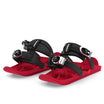
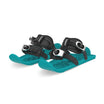












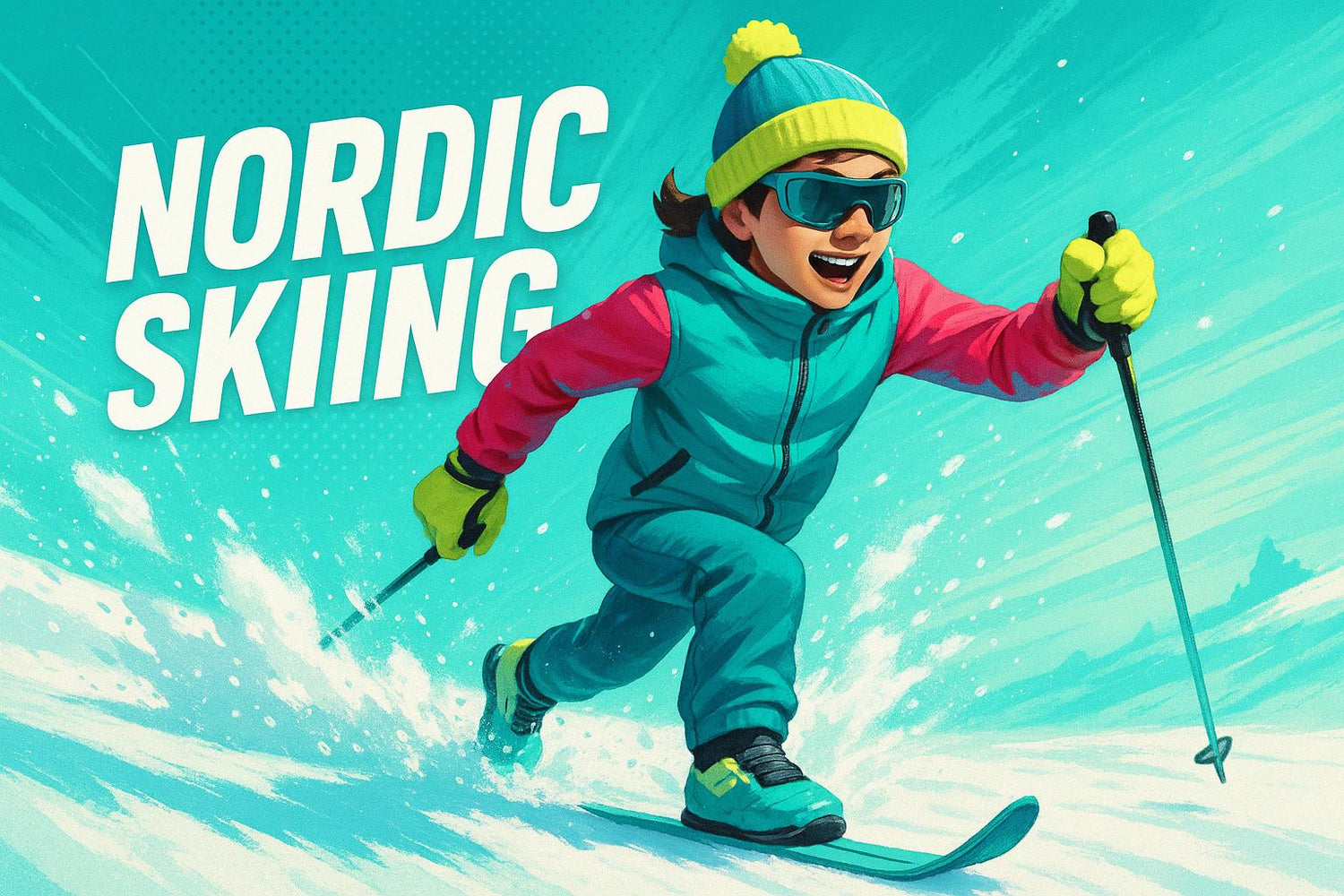
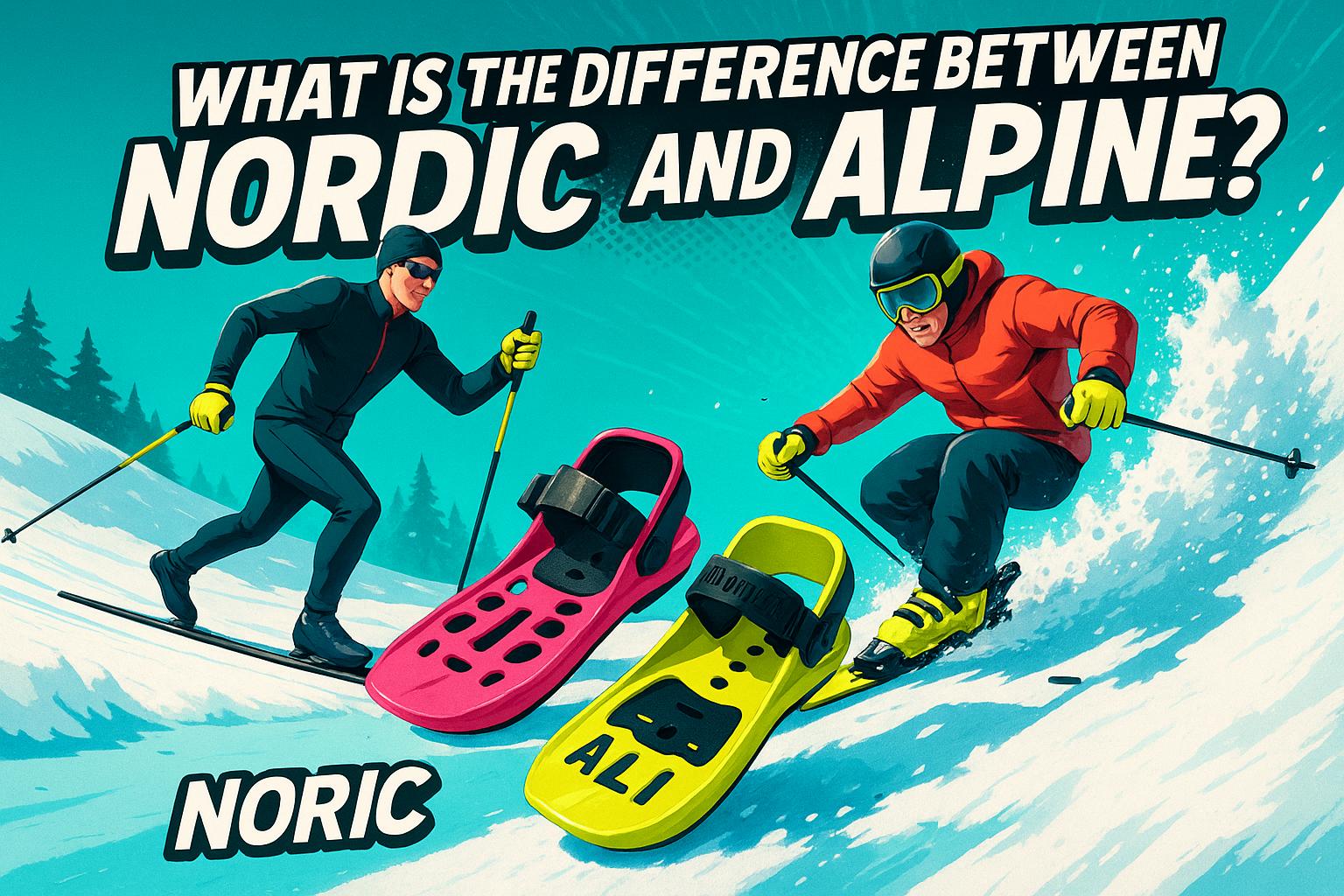
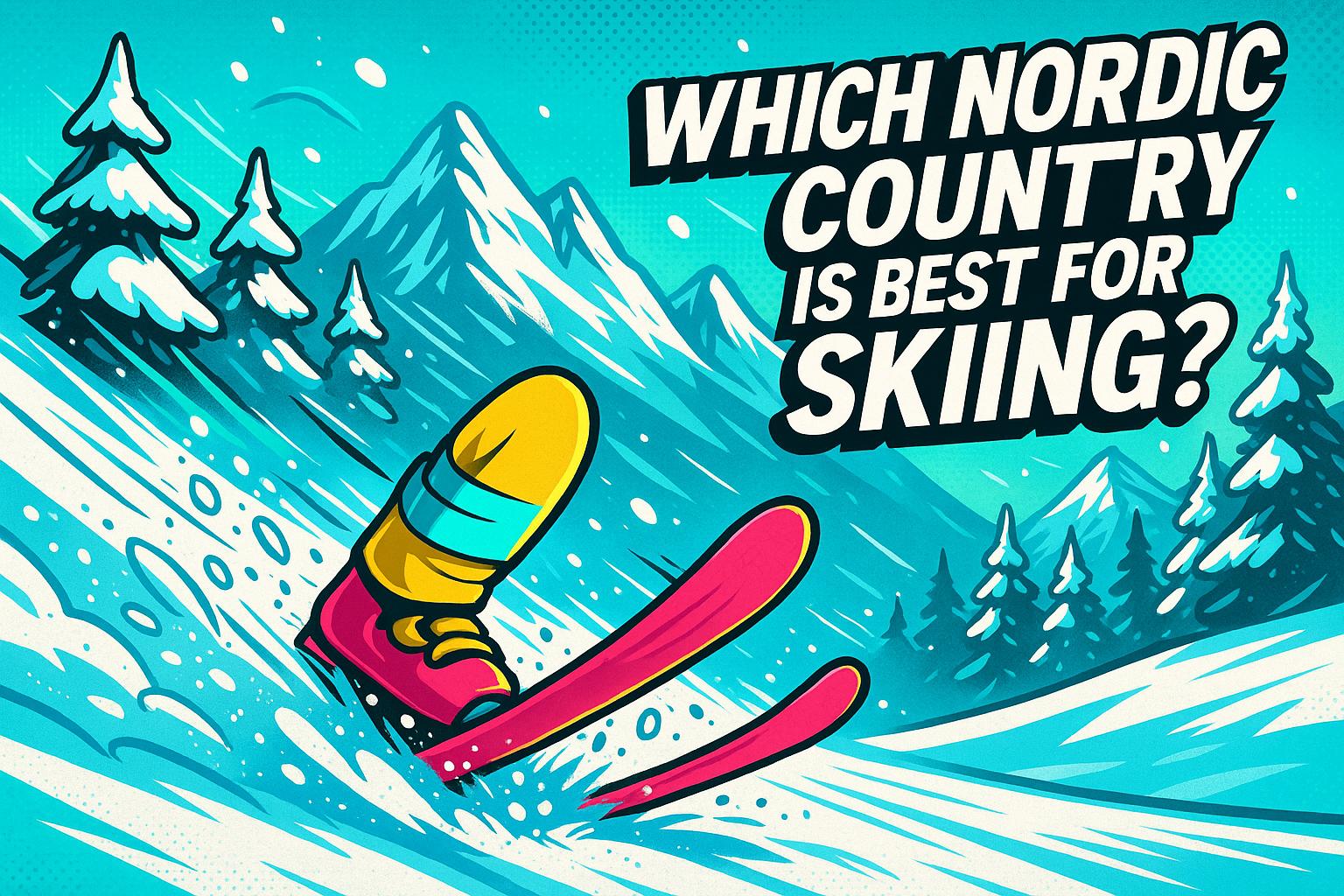




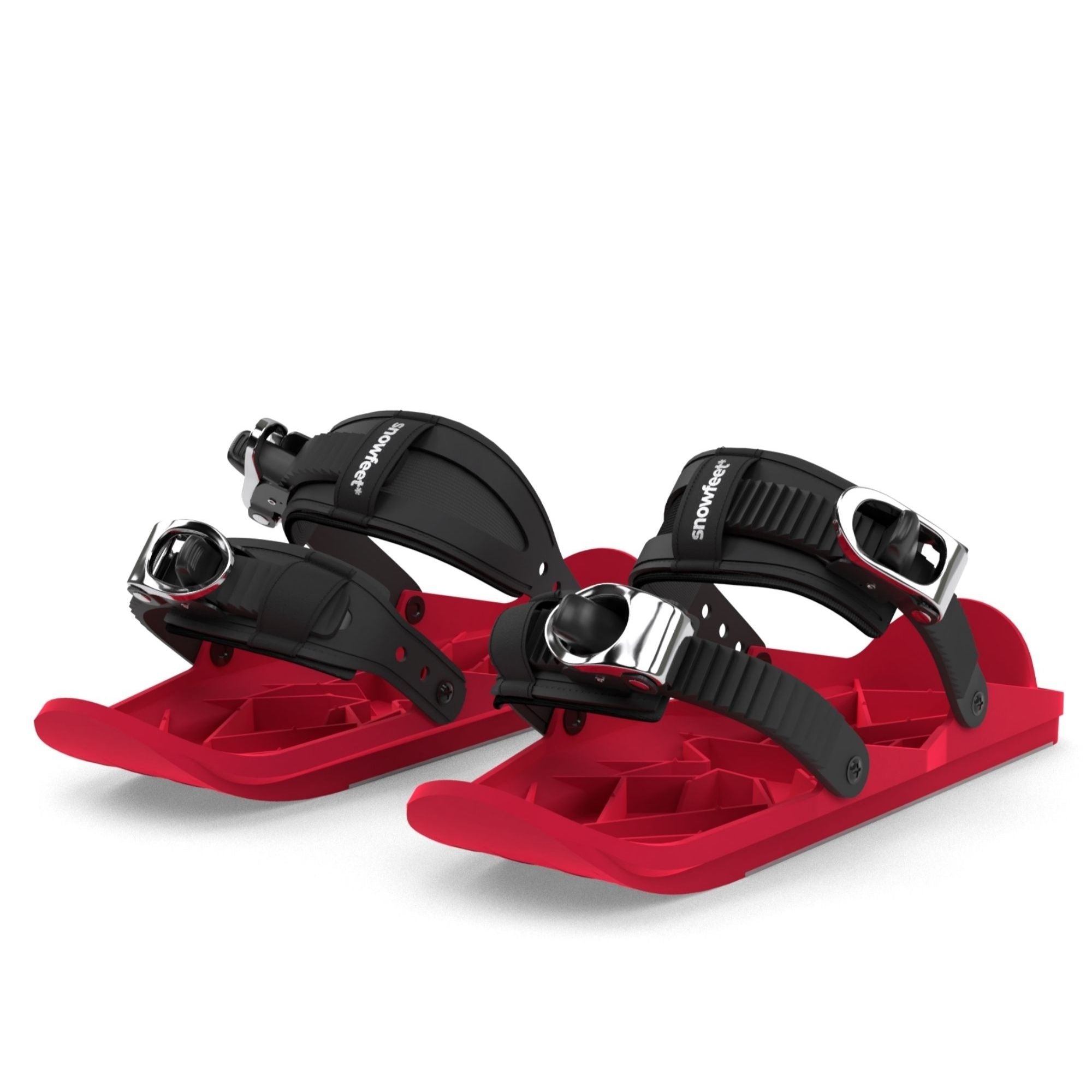
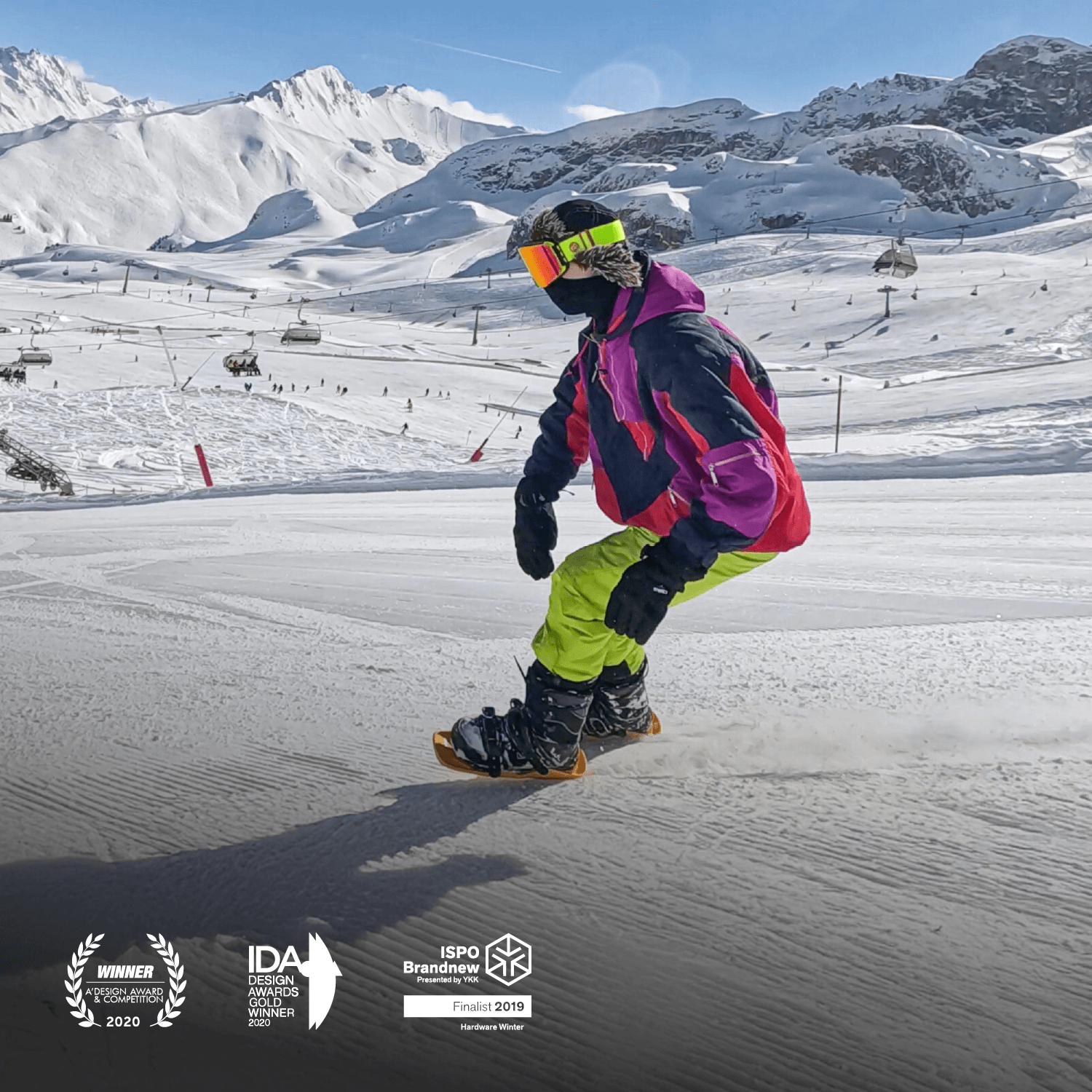




Deja un comentario
Este sitio está protegido por hCaptcha y se aplican la Política de privacidad de hCaptcha y los Términos del servicio.